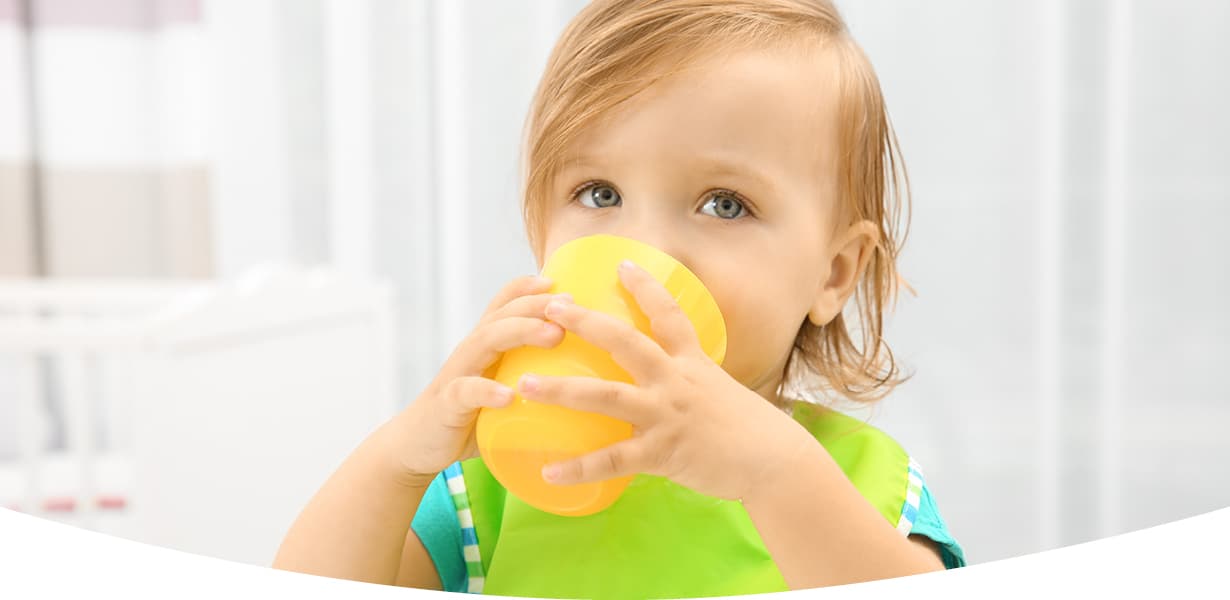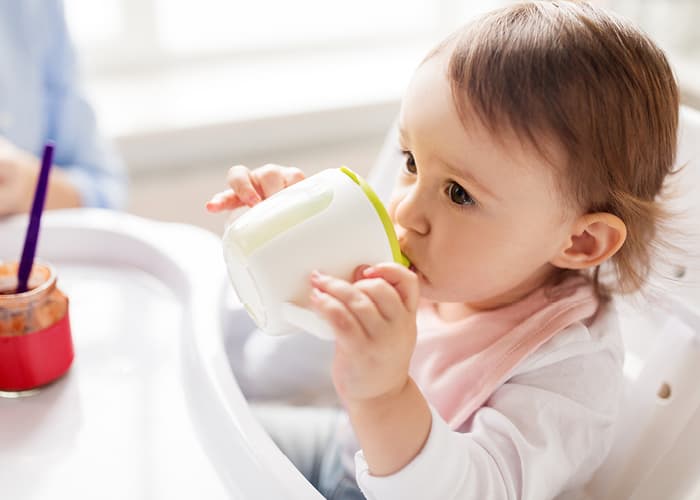
What should the child drink from? The baby's journey from bottle to cup
If choosing a pacifier and baby bottle feels like a real ordeal, then investing a small fortune and a lot of energy into tableware and cutlery during the introduction of solid foods is downright torture.
It should be easy to clean, easy for baby hands to hold, break-, spill-, and dishwasher-proof, colorful, patterned, optimally sized, ergonomic, BPA-free, and attractive, plus affordable... Moreover, it wouldn't hurt if the baby loves it.
Honestly? It's extremely difficult to find pieces that meet all the criteria, and even then there's a good chance the baby has no intention of using the miracle plate or super cup.
The mistake many parents make
The transition to solid foods and switching to a cup is an incredibly difficult period, which is accompanied by a terrible mess. Multiple daily outfit changes, constant cleaning, never-ending cooking-cleaning-feeding-puzzling combination, in which even the most patient mothers sometimes get tired. That's why it's common for tidy parents to opt for sippy cups, bottles, and parent-led feeding instead of letting the baby play, spill, and explore.
In the short term, they really fare better, but in the long term, they do much more harm than good, as reaching independent eating and drinking is a crucial milestone in the baby's development. The hand-eye coordination practice gained during mess-making, the tactile experiences, and the sense of independence, the articulation, facial, and mouth muscle strengthening gained from drinking from a cup, and the strengthening of body awareness all serve the child's benefit. Keep in mind: when we choose order, we say no to something much more important!
Transition from bottle to cup
As with everything else in caring for young children, it's worth following the principle of gradualness in weaning from the bottle. Instead of taking away all the bottles at once, first eliminate them during one meal - e.g., during replaced snacks!
When drinking confidently from a cup during mid-morning and afternoon snacks, then comes lunch, then breakfast, finally dinner, and any nighttime fluid intake. This way, the baby has time to adjust, there's no drastic change, and we ensure the child gets enough fluids. (Otherwise, too much change can cause anxiety in the little one and even lead to dehydration.)

How to Teach Your Little One to Drink from a Cup?
As in other areas of life, learning through imitation is primary in eating and drinking. Regularly drink from a cup in front of the baby, and if possible, drink water every time! This way, the little one sees how to hold, lift to the mouth, and keep the cup.
Some useful tips to help avoid operational disasters:
- initially, offer water in a cup to the baby only at the end of meals, after consuming the puree
- at each occasion, put only a small amount, a few sips of liquid in the cup
- hold the cup firmly, bring it to the baby's mouth, and gently but firmly encourage the little one to perform the correct movements
- choose a small-sized, unbreakable material cup, so there's no problem if the item falls or the little one throws it
- be prepared for accidents during the process. If we don't stress and worry about the expected disasters, everything will go much more smoothly, and the little one will practice more confidently.
- if possible, choose a traditional cup. However, if you notice that the baby regularly chokes or coughs, try cups with straws. In this case, choose a short straw solution, as it makes drinking easier.
The Most Common Questions from Parents About Choosing a Cup
Baby social media groups are full of cries for help asking for experiences and reports from desperate mothers. Most want to know if a handle, ear, or other gripping aid is needed on the baby's cup (it's not), when to start learning independent drinking (it varies by child, but you can try occasionally from the sixth month, but independent cup drinking should definitely be mastered before the 18th month), and of course, everyone is almost going crazy trying to find a completely spill-proof cup (good luck, no one has developed one yet).
And what is my personal experience? That the simplest is the best! In the initial period, a classic, thick glass espresso cup is perfectly suitable for trying. Later, when the baby truly drinks independently - at least we let them sip, spill, and splash without our help - it's worth choosing a cup that is easy to clean, safe, shatterproof, and easily replaceable if necessary. This way, we can ensure that our favorite's favorite is accessible and usable under all circumstances.
I believe that the transition from bottle to cup has only two secrets: patience and persistent attempts. For everything else, there's time and the smile of determined mothers.

